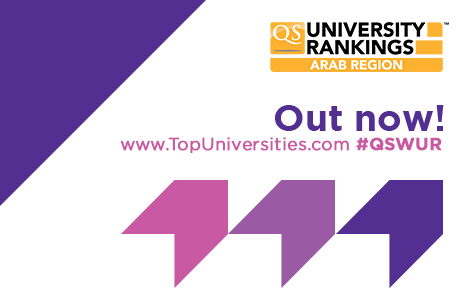
Saudi Arabian universities dominated the leading positions in the first full university ranking for the Arab world, taking three of the top four places. But the exercise as a whole was much more inclusive, with universities from 15 of the 21 countries that were eligible for inclusion appearing in the top 100.
QS published a provisional ranking for the region last year. The final version confirmed King Fahd University of Petroleum and Minerals, in Dhahran, Saudi Arabia, as the top institution, finishing in the top 20 on six of the nine indicators. The American University of Beirut (AUB) was less than a point behind and was the favourite choice of employers.
King Saud and King Abdul Aziz universities were Saudi Arabia’s other representatives in the top four, while the American University in Cairo, completed the top five. Saudi Arabia had the largest number of universities in the ranking, at 19, while Egypt had 15 and the United Arab Emirates (UAE) 13.
Almost 260 institutions were evaluated during the exercise and 194 had enough data to be ranked, as well as being sufficiently broad-based to be included. Of these, 100 appear in the published ranking, with those below 50th place grouped together in bands of ten because the scores become too close to separate each university reliably.
More than 1,300 academics and 950 employers from the region contributed views for the new ranking, which also takes into account staffing levels, the proportion of academics with a PhD, the number of research papers per faculty member and the number of citations per paper, as well as the proportions of international faculty and students, and web impact. There were no changes of methodology since last year’s provisional ranking, which was the product of lengthy consultation in the region. QS had hoped to add citations in Arabic, but was unable to find a reliable source. The search is continuing for future editions of the ranking.
Like the other regional rankings produced by QS, it includes measures that do not feature in the QS World University Rankings. Data from the Webometrics ranking are used, for example, to show universities impact online. While half of each university’s score comes from the two reputational surveys, 20 per cent is from the poll of employers (twice the percentage in the World Rankings) and only 30 per cent from academics.
Universities in the 21 countries in membership of the Arab League were eligible for inclusion. But no data could be collected on universities in Syria, and the universities of Mosul and Tikrit, in Iraq, were reported to be closed at the time that the ranking was compiled. However, other institutions in Iraq are included, with the University of Baghdad rising eight places since last year’s provisional ranking and making the most progress among those in the top 20.
Other universities to rise sharply in the top 20 are Qatar University, which is now on the verge of the top ten, Sultan Qaboos University, in Oman, and King Khalid University, in Saudi Arabia. All three have moved up five places.
The ranking reflects the diversity among universities in the Arab region. Nine of the top 20 are classified as ‘extremely large’, some with as many as 200,000 students. Most are fully comprehensive, public institutions, and relatively few have a strong research focus.



